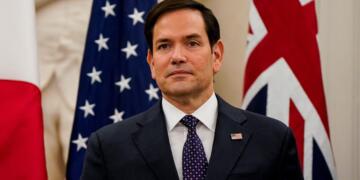Cabinet has approved new telecom policy named ‘National Digital Communications Policy 2018’ which aims to attract 100 billion dollars in investment and create 4 million (40 Lakh) jobs by 2022. “Emerging technologies like 5G and Internet of Things warrant the need for a new consumer-centric and application-centric policy. We want telecom to become not just a revenue generating sector but also a socio-economic growth sector,” said Manoj Sinha after cabinet meeting. The new policy also aims to connect every corner of the country with 50 mbps broadband connection. Entry of Reliance Jio has pushed other telecom companies in the cycle of loss and they are desperate to attract capital to compete with Reliance. “The industry today is facing one of its toughest phases and low-cost financing is the need of the hour for most service providers who are languishing in debt and unprecedented losses,” said Harsh Walia, associate partner, Khaitan and Co. This new policy will not only aid proliferation of telecom services, but also facilitate low-cost financing.
The new telecom policy will replace National Telecom Policy- 2012. Previous to 2012, telecom sector was operated on the basis of ‘New Telecom Policy-1999’ which fostered unprecedented growth of telecommunication in the country. This policy was brought by Vajpayee government to involve private operators in the growth of telecommunication and end the monopoly of public sector operator BSNL. The first telecom policy in India was brought in 1994 which have the provisions for an independent regulator later named as Telecom Regulatory Authority of India (TRAI). The TRAI act was passed in 1997, however it was amended in 2000 to meet requirements of 1999 policy and later amended in 2014 to meet requirements of 2012 policy. Various acts including TRAI will need to be further amended to meet the requirements of NDCP-2018.
The draft of NCDP-2018 was put for public feedback in May by outlining the aims and objectives. The goals of this policy include increasing contribution of telecom sector in GDP from 6 percent to 8 percent. To attract capital for the sector, government will review license fee, universal service obligation fund levy, and rationalization of tariff charges. As of now, telecom operators pay almost 8 percent of total revenue as license and spectrum fee.
Telecom associations gave positive reviews of NCDP-2018 and expressed desire for early implementation of the policy. “The most important and urgent requirement is to restore the financial health of the sector for which the policy document envisages the reduction in levies and ease of doing business,” said Rajan Mathews, director general, Cellular Operators Association of India. “We hope that the DoT will closely monitor the timely implementation of this policy, so that the industry can recuperate from the deepening financial stress,” he added. The policy draft will be soon tabled in parliament. “We aim to kick-start implementation on the ground by the next one year and the overall objectives would be met in five years,” Sinha said. The goals of policy include 50 lakh Wi-Fi hot spots by 2020 and 1 crore by 2022 through National Broadband Mission and implementation of Fibre First Initiative to take broadband across the length and width of the country. Broadcasting and IT will also go through major changes after implementation of the policy.




























